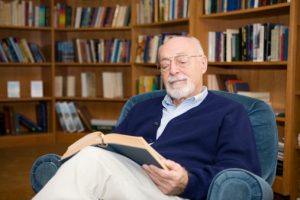Esmerelda Santiago, a well-known Puerto Rican author, had a serious stroke in January 2008 just after she had finished her latest novel. The stroke caused her to develop aphasia, which largely ruined her ability to read and to write at all.
In Santiago’s case, the usual stroke indicators were not there: drooping face, weak limbs, difficulty speaking. But she woke up that morning in 2008 not feeling quite right. She had a thought that she might have had a stroke, and she did a video conference with a friend in Rome to see if her friend thought she looked normal.
Her friend said that she looked ok. Santiago thought that she had just been writing too much and was tried. She took the day off and relaxed, but she noted that she felt very tired.
The next day, the author arose to start writing in the morning, but shockingly, she could not read the words on her screen. They appeared to her to be just gibberish, although she had written them herself a day earlier. When she called her friend again, she told her that Santiago was speaking slower than she should. She then went to her doctor right away, who did a CT scan on her, and it was found that she had had a small stroke.
It was determined that she had had a small stroke in the area that provides blood to the area of the brain that deals with written and spoken language. Her asphasia got worse, and soon soon she could not understand anything in either English or Spanish.
People who have had a stroke can regain some or most of their reading ability.
She did not have any muscle-related symptoms as most stroke patients do, but not being able to read or write was devastating to the author. She was terrified that she would never be able to do either again.
However, she found that as she recovered from her stroke, some of the damaged cells were able to regain function, and her brain also created new cells as new information was learned. And other parts of the brain took over some of the reading and writing functions that were lost during her stroke.
After a few weeks, Santiago went to the library and she started to look at books in English and Spanish, and over a period of six months, she was able to regain most of her ability to read. In fact, after about six months, she found that she could open Charles Dickens’ Bleak House and read most of it. It caused her to burst into tears.
She believes that as of today, her ability to read English is at 98% and in Spanish 80%. Also, the author continues to read as much as she can, and often uses the dictionary to look up words she does not remember.
As far as her writing goes, it takes her longer; she only is able to write about 300 words per day, when before she could write 3000. She does believe however, that over time, she will be able to greatly speed up her writing as she gets more practice.
This story indicates that there is hope for stroke sufferers who have suffered substantial damage to the brain. Your brain does have the ability to recover to a certain degree; it just takes plenty of patience and practice.
Reading and Writing Aids
Wanchik’s Writer – Wraps around the palm between thumb and index finger.
Verilux EasyRead Illuminated Magnifier – 2.5X optical-grade lens with a 5X spot lens and two LED lights.






